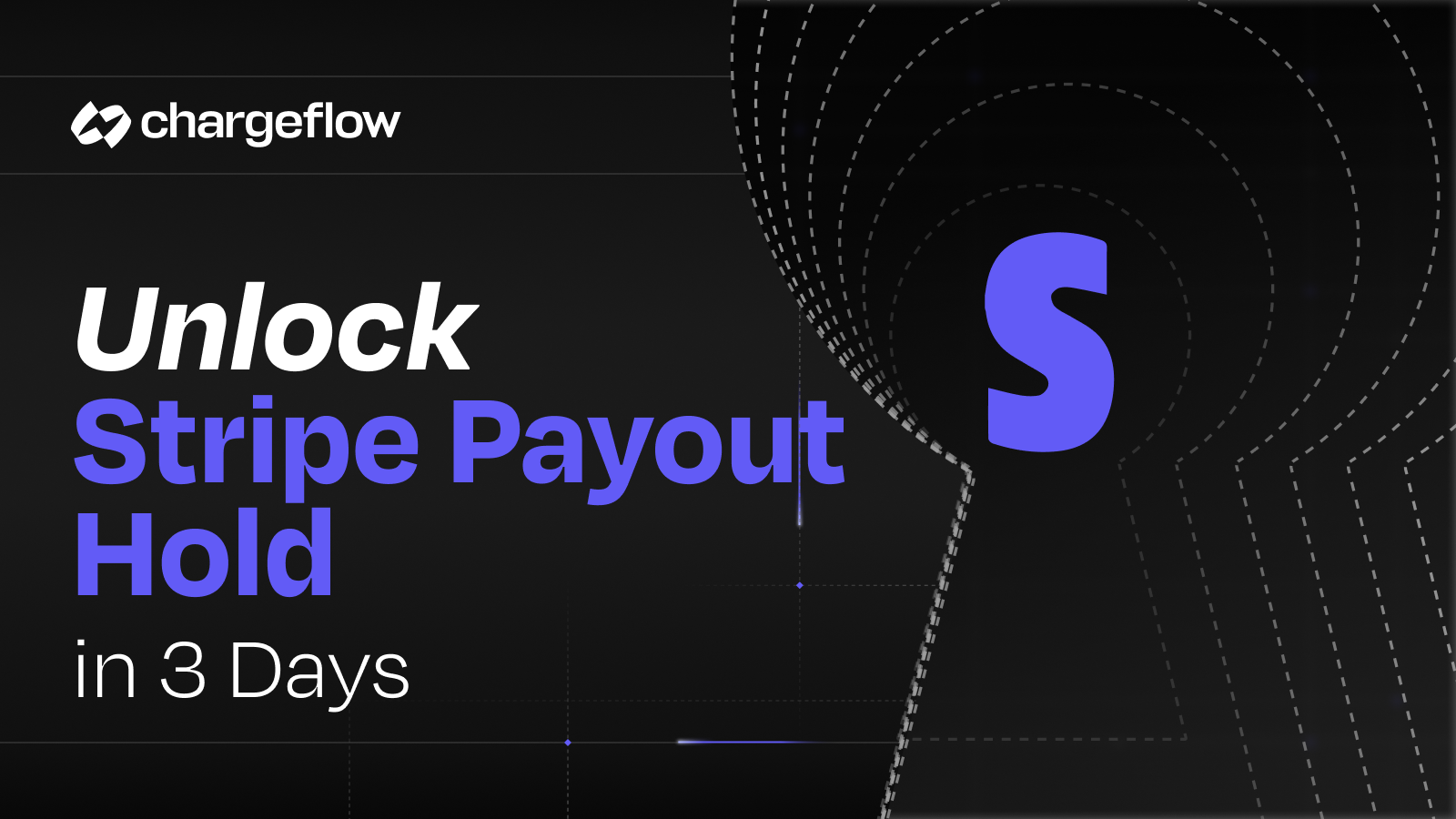Safeguarding Your Online Store: eCommerce Fraud Prevention Best Practices

Chargebacks?
No longer your problem.
Recover 4x more chargebacks and prevent up to 90% of incoming ones, powered by AI and a global network of 15,000 merchants.
Secure your online store with top eCommerce fraud prevention practices. Safeguard your business and customers from fraudulent activities.
Welcome, eCommerce merchants, to a world where boundless opportunities await in the realm of eCommerce. As you embark on your digital journey to conquer the online market, it's essential to equip yourself with the armor of knowledge and vigilance. Today, we dive deep into the captivating realm of eCommerce Fraud Prevention Best Practices, where we unravel the secrets to safeguarding your online store from the lurking dangers of fraudulent activities.
In this fast-paced digital age, where convenience and connectivity reign supreme, the risk of eCommerce fraud looms larger than ever. As you strive to build a thriving online business, one crucial factor can make or break your success: trust.
Your customers trust you to protect their sensitive data, to provide a secure environment for transactions, and to ensure their online shopping experience remains free from deceit.
Rest assured, merchants, we've got you covered! We'll lead you through the labyrinth of secure payment gateways, the intricacies of order verification processes, and the latest advancements in fraud detection software. By the time we're done, you'll have the tools and knowledge needed to create an impregnable fortress around your digital storefront.
So, merchants, prepare to fortify your knowledge, bolster your defenses, and gain a competitive edge in the world of eCommerce. Let us walk hand in hand through this journey, empowering you with the knowledge and expertise to outsmart even the most sophisticated fraudsters.
Are you ready to fortify your online empire and build lasting trust with your customers? Then dive right in as we embark on this exciting adventure together!
Types of eCommerce Fraud
As a merchant, it's crucial to be aware of the different types of fraud that can target your business and take necessary precautions to shield yourself from these treacherous practices.
Identity Theft and Account Takeover
- Fraudsters may steal personal information from customers, gaining unauthorized access to their accounts.
- They can make unauthorized purchases, leaving you with chargebacks and angry customers.
Chargeback Fraud
- Crafty scammers exploit the chargeback process, claiming they never received their orders or were victims of fraud themselves.
- As a result, you lose both money and the products you shipped.
Phishing and Spoofing
- Fraudsters send deceptive emails or create fake websites that mimic yours, tricking customers into divulging sensitive information.
- Unsuspecting customers fall into their trap, jeopardizing both their data and your reputation.
Friendly Fraud
- Ironically named, friendly fraud occurs when customers dispute legitimate charges with their credit card companies instead of seeking a refund from you.
- It leads to revenue loss and higher chargeback rates for your business.
Affiliate Fraud
- Dishonest affiliates may engage in fraudulent activities to inflate their commission, such as using stolen credit cards to make purchases through their links.
- Your brand reputation suffers, and you lose profits while rewarding fraudulent behavior.
As a vigilant merchant, you must stay ahead of these cunning fraudsters. By recognizing these types of eCommerce fraud, you can implement robust security measures and invest in advanced fraud detection software.
Building trust with your customers and educating your staff about potential red flags are also essential steps to safeguard your online store.
Best Practices
Chargeflow continuously interacts with Ecom merchants and learns from their experiences what worked for them and what did not. Based on that data we have listed down the best practices for eCommerce fraud prevention.
Identifying Vulnerabilities
Identifying vulnerabilities in your online store is the first line of defense against potential threats. Here's how you can protect your business and your customers:
Recognize High-Risk Transactions
- Analyze unusual purchasing patterns, such as a sudden increase in order volume or multiple transactions from the same IP address.
- Keep an eye out for unusually high-value orders, especially from first-time customers.
- Flag orders that ship to different billing and shipping addresses, as this could be a red flag for potential fraud.
Analyze Suspicious User Behavior
- Pay attention to customer accounts with multiple failed login attempts within a short period. This could indicate an attempted account takeover.
- Look for users who change their account information frequently, as this might suggest fraudulent activity.
- Monitor for any sudden changes in purchase behavior, such as switching from low-value items to expensive products.
Monitor Traffic Sources
- Be cautious of an influx of traffic from unexpected or unfamiliar sources, especially if they originate from high-risk countries.
- Use tools to track referral sources and identify any questionable links or sources that may lead to phishing attempts.
Evaluate Shipping Discrepancies
- Scrutinize orders with mismatched shipping methods, such as overnight delivery for low-cost items.
- Check for orders with multiple shipping addresses using the same payment method, which may signal an attempt to mask fraudulent activities.
Robust Security Measures
Protecting your customers' sensitive information and your brand's reputation is a top priority. Here are some powerful security measures that will fortify your defenses and keep your online store secure:
1. Two-Factor Authentication (2FA)
- Enhance login security by requiring an additional verification step.
- You and your customers will receive a unique code on their devices to confirm their identity.
- This adds an extra layer of protection, making it harder for unauthorized access.
2. Address Verification System (AVS)
- Validate billing address details provided during checkout.
- It helps detect suspicious transactions where the address doesn't match the cardholder's information.
- You can confidently proceed with genuine orders while flagging potential risks.
3. Card Verification Value (CVV)
- Require customers to enter the CVV code on their payment cards.
- CVV serves as an added security code that isn't stored on the card's magnetic stripe.
- Reduces the likelihood of fraudsters using stolen credit card information.
4. Device Fingerprinting
- Create a unique digital fingerprint for each user's device.
- Identifies returning customers and potential fraudsters based on their browsing behavior.
- Offers insight into any unusual patterns, helping you take appropriate action.
5. IP Geolocation
- Track the geographical location of website visitors and customers.
- Identify potentially fraudulent orders coming from high-risk regions.
- Restrict access or require additional verification for suspicious IPs.
6. CAPTCHA and ReCAPTCHA
- Implement interactive tests to differentiate between humans and bots.
- Prevents automated attacks, such as brute force login attempts.
- Ensures only genuine users can interact with your online store.
Secure Payment Gateways
Secure payment gateways play a pivotal role in protecting your business from potential cyber threats and building trust with your valuable clientele. Let's delve into the world of secure payment gateways and discover how they can keep your profits safe and sound.
The Right Payment Gateway Matters
Selecting the right payment gateway sets the foundation for a secure eCommerce experience. Look for a reputable and established provider that aligns with your business needs and offers robust security features. A reliable payment gateway will encrypt sensitive data during transactions, preventing unauthorized access.
Tokenization and Encryption: Layers of Protection
Tokenization and encryption are like your digital bodyguards, shielding sensitive data from prying eyes. When your customers input their payment information, the payment gateway replaces this data with a unique token.
This way, even if a cybercriminal intercepts the data, it's rendered useless without the tokenization key.
SSL Certificates: Locking Down Communication
Imagine SSL certificates as the padlock that secures communication between your website and your customers' browsers.
When transactions take place, SSL encrypts the data, safeguarding it from potential eavesdroppers. When visitors see that reassuring padlock icon in their browser, they know their information is in safe hands.
The Checkout Process: Smooth and Secure
A seamless checkout process encourages customers to complete their purchases, boosting your conversion rates. A secure payment gateway ensures that the payment process is both swift and safe, leaving your customers with a positive impression of your brand.
PCI DSS Compliance: Upholding Industry Standards
Compliance with Payment Card Industry Data Security Standard (PCI DSS) is non-negotiable. A reliable payment gateway provider adheres to these stringent standards, giving you peace of mind that your eCommerce operations meet the industry's best practices.
Your Reputation is Priceless
Building trust with your customers is vital for a thriving online business. By offering secure payment gateways, you demonstrate your commitment to protecting their personal and financial information, thereby enhancing your reputation and customer loyalty.
Don't Compromise on Security
In a constantly evolving digital landscape, never compromise on your eCommerce security. Invest in a reputable payment gateway that employs the latest technologies to keep cyber threats at bay. Remember, a single security breach can have severe consequences for your business.
Order Verification Process
When running an online store, ensuring that every order is legitimate is paramount to protect your business from potential fraud. The order verification process acts as your first line of defense, and getting it right is crucial. With these foolproof checks in place, you can confidently fulfill orders while keeping fraudsters at bay.
1. Manual Review Procedures
- Personally inspect each order to identify any red flags or inconsistencies.
- Look for suspicious billing and shipping addresses, unusually large orders, or rush delivery requests.
2. Velocity Checks
- Analyze the frequency of orders from the same customer or IP address.
- Flag any sudden spikes in order volume to prevent bulk fraudulent purchases.
3. Geo IP Analysis
- Verify the customer's location matches the IP address location.
- Watch for orders originating from high-risk countries or regions.
4. Customer Order History Analysis
- Review the customer's past order behavior and patterns.
- Watch for unusual changes in buying habits or frequent order cancellations.
5. Integration with Fraud Detection Software
- Utilize cutting-edge AI-powered fraud detection solutions.
- Leverage behavioral analytics and real-time monitoring to spot potential risks.
6. Immediate Communication
- Reach out to customers for order confirmation or additional verification.
- Quick responses help detect and resolve any discrepancies promptly.
7. Use of Third-party Verification Services
- Partner with identity verification services to authenticate customers.
- Validate customer information against reputable databases.
8. Two-Factor Authentication (2FA)
- Implement additional security layers for customer logins and transactions.
- Require one-time passwords (OTP) sent to their registered devices for verification.
9. Device Fingerprinting
- Track and analyze unique device attributes for each order.
- Identify and block suspicious devices associated with fraudulent activities.
10. Order Amount Thresholds
- Set limits on the maximum order amount for first-time customers.
- Gradually increase limits based on their order history and trustworthiness.
11. Collaborate with Payment Processors and Issuers
- Work closely with payment partners to share fraud data and insights.
- Benefit from their fraud-prevention mechanisms and expertise.
12. Educate Your Team
- Train your staff to spot potential signs of fraud during the order processing.
- Encourage them to escalate suspicious orders for manual review.
13. Constantly Refine Your Process
- Regularly review and improve your order verification procedures.
- Stay updated with the latest fraud trends and adjust your strategies accordingly.
Fraud Detection Software
With the rising tide of eCommerce fraud, you must stay one step ahead to protect your business and your customers' sensitive information. That's where cutting-edge Fraud Detection Software comes to your rescue! Let's dive into why this powerful tool is an absolute must-have for any online store:
Stay Ahead of Evolving Threats
Cybercriminals are constantly devising new ways to exploit vulnerabilities in eCommerce systems. Fraud detection software utilizes advanced technologies like Artificial Intelligence (AI) and Machine Learning to adapt and evolve alongside these ever-changing threats.
By analyzing vast amounts of data in real-time, this software identifies patterns and detects suspicious activities, ensuring you're always one step ahead of potential attacks.
Real-time Monitoring for Instant Action
Fraud waits for no one, and neither should your response. With fraud detection software in place, you can monitor transactions in real-time, allowing you to spot and halt fraudulent activities as they happen.
Real-time alerts enable you to take swift action, preventing chargebacks and losses, while keeping your customers' trust intact.
Customizable Rules for Precise Control
Each business is unique, and so are its risk factors. Fraud detection software empowers you to set up customizable rules that align with your business model.
Tailor the system to match your specific requirements, from setting transaction limits to flagging suspicious geolocations. This granular control ensures you receive precise and accurate fraud alerts.
Seamless Integration for Smooth Operations
We understand that your time is valuable, and any disruption to your operations can be costly. That's why fraud detection software is designed for seamless integration with your existing payment and eCommerce platforms.
Implementing this software won't disrupt your workflow; instead, it will enhance it by providing an extra layer of protection without hassle.
Reduce False Positives with Behavioral Analytics
Nothing is more frustrating than false alarms that waste your time and resources. Fraud detection software leverages behavioral analytics to distinguish legitimate customer behavior from potential fraud.
By analyzing user patterns and historical data, the system can significantly reduce false positives, ensuring your legitimate customers enjoy a smooth shopping experience.
Stay Compliant with Industry Standards
As an online merchant, compliance with industry regulations is crucial. Fraud detection software is designed with these standards in mind, ensuring your business aligns with the necessary requirements, including PCI DSS compliance. By staying within these guidelines, you not only protect your customers but also shield your business from legal and financial consequences.
Peace of Mind for You and Your Customers
Above all, fraud detection software provides you and your customers with peace of mind. Knowing that you have a robust system in place to safeguard against potential threats boosts customer confidence in your brand.
With their trust secured, you can focus on growing your business without worrying about the lurking shadows of fraud.
Establishing Trust with Customers
As a merchant in the ever-evolving world of eCommerce, gaining your customers' trust is paramount. When your customers feel secure and confident in their transactions, they are more likely to become loyal advocates for your brand. Here are some essential strategies to establish trust with your valued customers:
1. Credible Product Reviews
You know your products are top-notch, but your customers need reassurance. Encourage satisfied buyers to leave honest reviews and ratings. Positive feedback from real customers acts as a powerful endorsement for potential buyers, instilling trust in your products and services.
2. Transparent Refund and Return Policies
Be crystal clear about your refund and return policies. Make sure they are fair, straightforward, and easily accessible on your website. Customers feel more at ease knowing they can easily return products or get a refund if needed, and this fosters trust in your commitment to customer satisfaction.
3. Maintaining Open Communication Channels
When customers reach out with inquiries or concerns, respond promptly and professionally. Provide multiple communication channels like live chat, email, or phone support to cater to different preferences. Your responsiveness shows that you care about your customers and their needs.
4. Personalized Customer Interactions
Treat your customers like the unique individuals they are. Personalize interactions by addressing them by name and offering tailored recommendations based on their purchase history. Such personalized attention shows that you value them as more than just another sale.
5. Secure Payment Processes
Invest in secure payment gateways and prominently display trust badges on your website. Show your customers that you take their security seriously and that their sensitive information is safeguarded during transactions. This not only builds trust but also helps prevent potential fraudulent activities.
6. Showcase Your Trust Seals and Certifications
If your business is verified by trusted organizations or has received industry-specific certifications, proudly display these trust seals on your website. Such symbols of authenticity reinforce your credibility and give customers the confidence to shop with you.
7. Highlight Social Proof
Leverage social media to showcase your brand's presence and interactions with happy customers. User-generated content, testimonials, and influencer endorsements can all add social proof to your reputation, leaving customers feeling more assured about their buying decisions.
8. Secure Website with SSL Certification
Secure Socket Layer (SSL) certification is a must-have for any online store. The padlock symbol in the address bar ensures that data transmitted between your website and your customers is encrypted, strengthening their trust in your platform.
9. Adhere to Privacy Policies
Clearly state your privacy policy, detailing how you handle customer data and ensuring that you protect their information. Assure your customers that their personal details will never be shared or misused.
10. Display Verified Badges and Partnerships
If you are a member of any trusted business organizations or have partnered with well-known brands, display their logos on your site. These badges act as endorsements, further solidifying your reputation.
Continuous Improvement
It's not just about implementing security measures and calling it a day; it's about continuously evolving your fraud prevention strategies. In the fast-paced world of eCommerce, complacency is the enemy, and embracing the mindset of continuous improvement is your secret weapon.
Here's how you can keep refining your fraud prevention game and safeguard your online store:
Embrace Regular Security Audits
A wise merchant knows the importance of periodic security audits. These audits are like X-rays for your online store, identifying potential weak spots and vulnerabilities that might have slipped under the radar. From transaction logs to user access controls, conducting regular security audits helps you stay proactive and plug any potential leaks.
Listen to Your Customers
Your customers are more than just a revenue stream; they can be your greatest allies in the fight against fraud. Pay attention to their feedback and experiences. If they spot something fishy or feel uneasy about a particular transaction, take their concerns seriously. Creating an open channel for customer feedback not only helps in fraud prevention but also fosters trust and loyalty.
Stay Informed and Adaptive
In the ever-evolving landscape of fraud, ignorance is not bliss. Stay informed about the latest fraud techniques and trends that miscreants might be cooking up. Being aware of new threats helps you stay one step ahead in devising preventive measures. Be ready to adapt your strategies as needed to outsmart the fraudsters.
Test and Optimize
Like a skilled chef perfecting a recipe, fine-tune your fraud prevention methods through testing and optimization. Conduct controlled experiments to see which measures yield the best results. Be ready to discard what's not working and double down on what shows promise. It's an ongoing process, and each iteration brings you closer to a bulletproof fraud prevention system.
Collaborate with Industry Peers
In this battle against fraud, you're not alone. Reach out to other online merchants and industry peers to share insights and experiences. Participate in forums, webinars, and workshops that focus on fraud prevention. The collective knowledge of the community can be a goldmine of best practices that can fortify your defenses.
Learn from Success Stories
Success leaves footprints, and other merchants might have faced and defeated fraud similar to what you're encountering. Read up on case studies and success stories of businesses that have triumphed over fraud. Their experiences can be a treasure trove of inspiration and actionable tips that you can apply to your own eCommerce empire.
Continuously Train Your Team
Your team is the frontline defense against fraud, so ensure they are well-equipped. Provide regular training sessions to keep them up-to-date on the latest fraud trends and detection techniques. Educate them on how to spot red flags and handle suspicious activities confidently.
Cultivate a Culture of Vigilance
Fraud prevention isn't just a task; it's a mindset that should be ingrained in your company culture. Encourage your team to be vigilant, always questioning and double-checking unusual transactions. A culture of awareness will create a formidable barrier against fraud attempts.
Celebrate Small Wins
The path to continuous improvement is not always smooth, but every small win counts. Celebrate your successes, whether it's thwarting a fraudulent transaction or implementing a new security feature that shows promise. Recognizing achievements boosts team morale and keeps everyone motivated to push even further.
The Rising Threat to Chargeback Fraud
Chargeback fraud is a growing threat to merchants of all sizes. In 2022, the global average chargeback rate was 1.35%, and it is expected to continue to rise in the coming years. There are two main types of chargeback fraud:
- Criminal fraud: This type of fraud occurs when criminals use stolen credit card information to make unauthorized purchases.
- Friendly fraud: This type of fraud occurs when a legitimate customer disputes a charge after receiving the goods or services.
Friendly fraud is becoming increasingly common, as it is more difficult for merchants to detect and prevent. This type of fraud is often referred to as "friendly" because the customer is not actually trying to commit fraud. However, the financial impact on merchants can be just as significant as criminal fraud.
There are a number of factors that are contributing to the rise in chargeback fraud. These include:
- The growth of online shopping: Online shopping makes it easier for criminals to commit fraud, as they can hide their identity and make purchases from anywhere in the world.
- The increasing use of credit cards: Credit cards are more widely accepted than ever before, which makes them a more attractive target for fraudsters.
- The rise of social media: Social media makes it easier for criminals to gather information about potential victims, such as their names, addresses, and purchase history.
Utilize Chargeflow Chargeback Fraud Management to Secure Your Revenue
Chargeback fraud is a major problem for eCommerce merchants. In 2022, merchants lost an estimated $32 billion to chargeback fraud. This can have a significant impact on a merchant's bottom line, and it can also damage their reputation.
Chargeflow is a chargeback fraud management solution that can help merchants reduce their risk of chargebacks. Chargeflow uses machine learning and artificial intelligence to automate the chargeback management process. This frees up merchants' time and resources so they can focus on other aspects of their business.
Chargeflow also provides merchants with a comprehensive dashboard that tracks chargebacks and provides insights into fraud trends. This information can help merchants identify and address potential fraud risks before they become a problem.
In addition to reducing chargebacks, Chargeflow can also help merchants improve their customer satisfaction. By resolving chargebacks quickly and efficiently, Chargeflow can help merchants avoid customer churn.
If you are an eCommerce merchant, Chargeflow is a valuable tool that can help you reduce chargebacks, improve customer satisfaction, and secure your revenue.
Here are some of the benefits of using Chargeflow:
- Reduced chargebacks: Chargeflow has a proven track record of helping merchants reduce chargebacks by up to 70%.
- Improved customer satisfaction: Chargeflow can help you resolve chargebacks more quickly and efficiently, which can improve customer satisfaction.
- Freed-up resources: Chargeflow automates the chargeback management process, freeing up your team to focus on other tasks.
- Comprehensive dashboard: Chargeflow provides merchants with a comprehensive dashboard that tracks chargebacks and provides insights into fraud trends.
- SOC 2 compliant: Chargeflow is SOC 2 compliant and designed to protect your data.
If you are interested in learning more about Chargeflow, you can visit their website or schedule a demo.

Chargebacks?
No longer your problem.
Recover 4x more chargebacks and prevent up to 90% of incoming ones, powered by AI and a global network of 15,000 merchants.






























.png)








